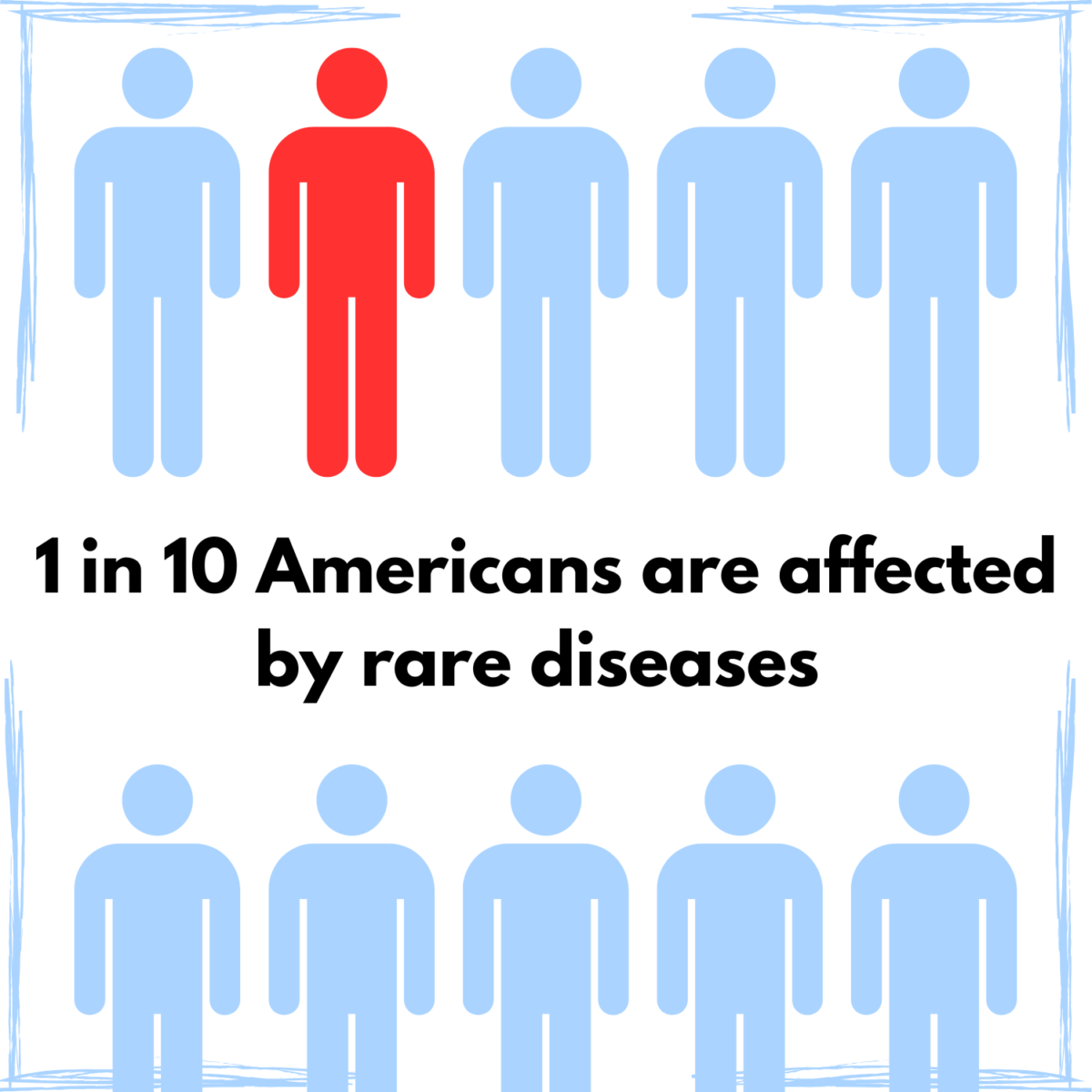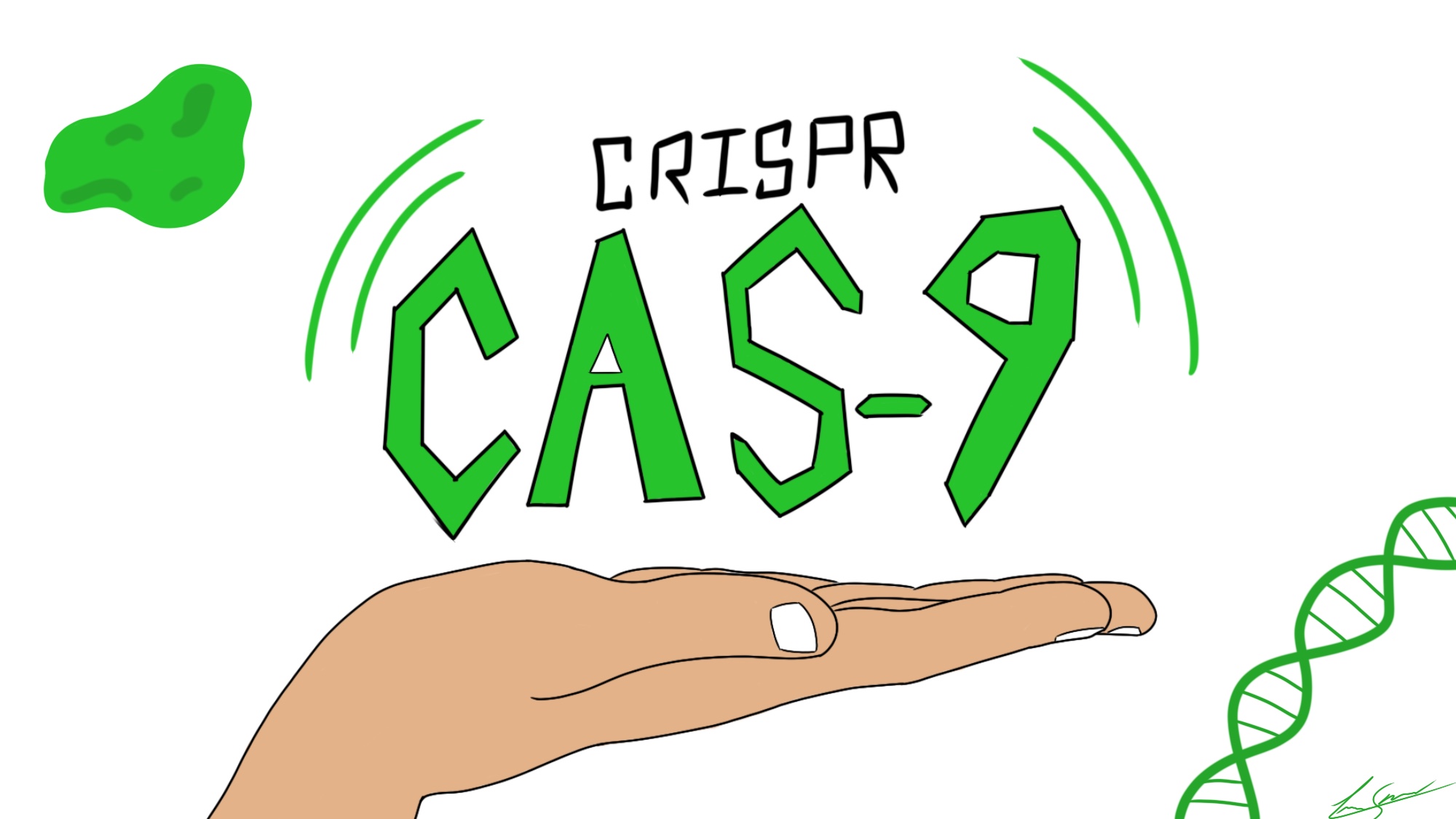Imagine you are a 13-year-old who has recently been diagnosed with a rare genetic condition. Apart from the understandable confusion and fear this causes, you now have countless questions flurrying about in your mind as to the treatment of your condition. Naturally, you turn to the internet for advice, and through your extensive research you find that a genetic counselor can answer all your disorder-related questions. You and the genetic counselor go through the different kinds of treatment plans that are suitable for you, and one of them sticks out: CRISPR-Cas9, a gene-editing tool.
The development of CRISPR-Cas9 technology has prompted research into possible gene-therapy treatments for rare diseases. There are about 7,000 rare diseases affecting 25 to 30 million Americans—that’s one in 10 people—according to the National Institutes of Health. Scientists hope that CRISPR-Cas9 gene therapies will soon become a viable option for those who are diagnosed with a rare genetic disease.

CRISPRs (clustered regularly interspaced short palindromic repeats) of DNA sequences were first identified in E. coli bacteria in 1987 and in M. tuberculosis in 1993, but their role as a defense mechanism against bacteria-associated viruses wasn’t discovered until the early 2000s. The bacteria create virus-specific genetic sequences called CRISPRs and attach them to enzymes. Then, when the virus comes to attack the bacteria, the new sequence and enzyme destroy it.
In 2012, Dr. Jennifer Doudna, a biochemist at the University of California at Berkeley, and other researchers discovered that CRISPR-Cas9 could be used as a gene-editing tool. She shared the Nobel Prize in Chemistry in 2020 for this accomplishment.
This up-and-coming technology is mainly based on permanent gene addition, which provides a functional copy and replaces a defective gene. For example, scientists are studying the effects of CRISPR-Cas9 in treating hemophilia, a rare blood disorder where a person’s blood does not clot completely. It is caused by variants in the F8 gene (for hemophilia A) and the F9 gene (for hemophilia B). To restore the function of the F9 gene in patients with hemophilia B, scientists inserted cDNA (complementary DNA) into the F9 gene of a mouse model. The results showed a genotypic and phenotypic correction in hemophilia B mice.
Using this technology, scientists are now able to incorporate CRISPR-Cas9 into a genetically engineered virus to treat rare genetic disorders in humans. It may sound simple, but the process is quite laborious. Scientists must first genetically modify the carrier virus to enter the cell, but not cause the disease, which is where the CRISPR-Cas9 technology comes into play. Researchers then allow the genetically engineered virus to enter the diseased cells so it can start producing more of the CRISPR-Cas9-edited gene and mRNA (messenger RNA) to treat the patient with a rare genetic disorder.
Dr. Peter Nghiem, an associate professor at Texas A&M University’s College of Veterinary Medicine and Biomedical Sciences, frequently works with CRISPR-Cas9 technology in relation to genetic disorders.
“The clinical trials for gene editing were in the teens; this was five years ago,” says Nghiem. “Now there are 85 clinical trials and it’s just going to keep going up. So I think, within the next five years, you’re going to start seeing FDA-approved therapies for gene editing.”
Although CRISPR-Cas9 gene-editing therapy is rapidly moving forward, these new technologies have some risks, according to Nghiem. Patients receiving CRISPR-Cas9-based gene therapy for rare genetic disorders might be in jeopardy of having widespread immune responses triggered. Additionally, the introduction of designer nuclei could lead to a severe form of DNA damage called double-strand breaks, or DSBs, which ultimately increase cancer cells in the patient. To prevent DSBs in rapidly dividing cells, such as cancer cells, scientists have developed another technique called non-homologous end joining (NHEJ) that, in short, joins the broken cells back together.
“The reason that gene editing is a game changer is because hypothetically, you will only have to perform it one time,” says Nghiem. “The gene will be permanently edited with the CRISPR-Cas9 enzyme.”
So again, imagine you are a 13-year-old who has recently been diagnosed with a rare genetic condition and you have finally found the answers you have been searching for. CRISPR-Cas9 gene-editing technology has given you the hope to push forward and persevere through your diagnosis. Although it is still in the early stages of development, this technology has the potential to revolutionize the way we treat rare diseases and improve the lives of millions of people around the world.
- CRISPR-Cas9 technology enables scientists to edit genes.
- ~30 million Americans have a rare genetic disease.
- CRISPR-Cas9 gene therapies are being explored to develop treatments for people with rare genetic diseases.
Sources
Alagoz, M., & Kherad, N. (2020). “Advance genome editing technologies in the treatment of human diseases: CRISPR therapy (Review).” International Journal of Molecular Medicine, 46(2), 521-534. https://doi.org/10.3892/ijmm.2020.4609
Nghiem, Peter; Interview. Conducted by Hrandini Rahul. July 25, 2023
Papasavva, P., Kleanthous, M., & Lederer, C. W. (2019). “Rare Opportunities: CRISPR/Cas-Based Therapy Development for Rare Genetic Diseases.” Molecular Diagnosis & Therapy, 23(2), 201-222. https://doi.org/10.1007/s40291-019-00392-3
Editorial Team
- Chief Editor: Annika Singh
- Team Editor: Annika Singh
- Image Credit: Logan Stranix
- Social Media Lead: Chloe Eng
Mentor
Casey Williamson is a science writer and communications strategist who has covered human and animal health and research at Michigan State University and Oregon Health & Science University and the University of Texas.
Content Expert
Peter Nghiem, D.V.M, Ph.D., is an associate professor of Veterinary Integrative Biosciences in the School of Veterinary Medicine and Biomedical Sciences at Texas A&M University. His expertise is in gene editing to treat rare diseases.


